10 Technology & Business Trends to Watch

Welcome to the second annual edition of HME Business’ yearly preview. Like last year, we are profiling 10 key industry trends that either have the potential to grow your business or impact your business in some way.
Unlike last year, we aren’t limiting our choices to only product categories. In addition to product categories, we also have highlighted some key business trends and opportunities HME providers will want to monitor and leverage. Likewise, many product categories and business trends are interrelated.
The 10 HME business and product segments that we think will have an impact on HME businesses in 2009 are:
• Cash sales
• Expanded provider resources
• Software
• Portable oxygen concentrators
• Route planning and GPS
• Bariatrics
• Home and auto access
• Bath safety
• Orthotics
• Power chairs
Obviously the 10 segments we’ve selected aren’t the only trends you’ll want to monitor during 2009. For instance, key funding and regulatory issues will also sit at the top of your agenda. The fate of competitive bidding, the incoming Obama administration’s healthcare reform efforts, and CMS accreditation will be key industry developments that will also define 2009.
In any case, we believe the industry segments we’ve defined will help shape the industry over 2009 and possibly provide you with growth opportunities.

Cash sales
While the industry was able to delay competitive bidding, it did so by agreeing to 9.5 percent funding cuts for multiple categories via the Medicare Improvements for Patients and Providers Act (MIPPA). Those cuts, due to go into effect Jan. 1, will have a far-reaching effect throughout the industry during 2009. With HME providers facing a sobering regulatory reality they must find new sources of income. That’s no easy feat for businesses that were used to receiving as much as 80 percent of their revenue through Medicare funding.
That said, there are providers making solid headway in retail, or “cash” sales. Cash sales supply providers with a reliable means to increase their financial stability by infusing their bottom line with a more timely cash flow. There’s no paperwork or auditing required to sell a pair of compression hoses or a bed rail to a patient, or their family member, with cash in hand.
Also, many cash sale items are affordable products that even patients with funding will buy in addition to their covered items, because those cash sales items serve their needs. Items that enhance their comfort or lifestyle are big sellers. There are a variety of aids to daily living, bathing aids, accessories and other items that various patient groups desire and buy. Indeed, a mobility provider that does not include wheelchair accessories is missing out on an important opportunity to increase its revenue streams just that much more.
And not every cash sale item is small, or low-priced, either. Some high-ticket items are retail items. For example, home access items such as vertical platform lifts are not covered by Medicare but are greatly needed by patients with mobility limitations. Selling such items at even an intermittent rate could greatly enhance the bottom line.
A growing market for those higher-priced cash sale items are Baby Boomers, who are often retiring with deep pockets and are ready and willing to purchase high-ticket items for family members and themselves.
However, cash sales require retail expertise. Providers must pay careful attention to their retail locations, ensuring that items are well presented, and that there are available staff members who are well trained and can answer patient questions.

Expanded provider resources
While the reimbursement environment is difficult, and the costs of running HME businesses aren’t getting any smaller, most providers would be surprised at the resources available to them to cut costs and take advantage of new opportunities. In fact, there are a variety of vendors and other organizations providing expanded resources to HME providers.
To begin with, even vendors of smaller HME items provide enhanced support to providers. This is especially true for vendors of cash sales items, who often offer special retail displays, literature and other items that help sell their products. But that only scratches the surface.
Some vendors are rolling out whole suites of support services to help providers that include enhanced service plans with networks of field technicians; billing and collections; marketing support and materials; and even HME business management software. And not only vendors are providing expanded resources. Groups such as member service organizations and buying groups are offering a wealth of services ranging from regulatory support to education to financial services.
Companies such as Invacare and Pride Mobility, as well as groups like The VGM Group and The MED Group, are quickly blazing expanded provider support trails.

Software
As providers look for ways to cut costly inefficiencies, streamlining back-office processes is a target-rich environment for efficiency experts at any HME business. A key tool for turning provider management operations into a lean, mean machine is HME management software.
HME software systems assist providers by helping them stay on top of their billing and minimizing DSOs. HME software systems provide a standardized means of entering and tracking all billing information to provide fast data access for following up on claims and collecting receivables. Best of all, billing software eliminates costly paper processes.
But billing is only part of the story. Most HME software offerings also help providers electronically manage all their patient data and their coverage. Having that data on-hand helps provider staff quickly answer questions correctly, without having to dig through records.
Other benefits include enhanced customer communications, and inventory management and reporting tools that help providers discover other ways to increase efficiency, or identify opportunities to serve new patient needs. Some software companies are leveraging the power of the Internet to give providers tools to network, identify possible referral partners, and even buy and sell DME.
HME software offerings include standalone packages that run at the provider’s business, and hosted services that are securely accessed by the provider via special client software or a web browser. In the former model, the provider typically pays a software licensing fee, whereas in the latter model, the provider pays a monthly service fee. Both models have their pros and cons.
As providers focus on efficiency, cost-savings and running smart operations during 2009, HME software systems will serve as a cornerstone of their strategies.
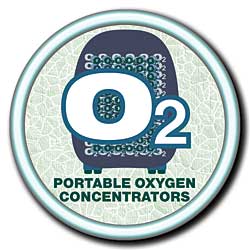
Portable oxygen concentrators
The prospects for the oxygen market continue to be shaky due to the funding environment. The 9.5 percent cuts the industry agreed to in MIPPA included oxygen, and while that 9.5 percent is less than half the reduction in funding oxygen would have otherwise received under competitive bidding, it is alarming nonetheless.
On top of that, CMS’s recently released oxygen payment rules still keep in place a 36-month rental cap on oxygen equipment, but the provider will retain ownership of the devices. Rental payments will cover oxygen equipment, contents, supplies and accessories, but not the costs of providing the services and maintenance associated with oxygen service. With fuel, manpower and all the other costs involved in such a delivery-intensive homecare service — not to mention the 9.5 percent cut — many oxygen providers are worried they might be priced out of the game.
Simply put, providers must find a way to get around the regulatory realities to sustain their profits. In that respect, the battle cry has been to transition to a low- or no-delivery business model, and portable oxygen concentrators are key to accomplishing that for many patients.
POCs generate their own oxygen, thus eliminating a significant piece of the traditional oxygen delivery services that currently comprise approximately 70 percent of an average oxygen provider’s overhead. Better yet, they benefit oxygen patients, the majority of whom are ambulatory, but have difficulty even running local errands. With a POC they can more easily get out of the house for even extended trips.
Also, POCs could represent a cash sales opportunity for providers as Baby Boomers either consider these devices for themselves or their parents as awareness of the benefits of POCs becomes more commonplace.
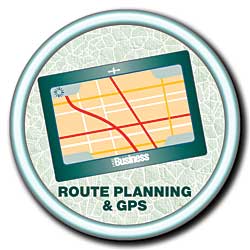
Route planning and GPS
While oxygen providers might want to transition to a low- or no-delivery model to maintain their margins, many will still need to deliver tanks to some patients while they transition other patient groups to portable and stationary concentrators. This means they must discover ways to cut costs and increase efficiencies in their delivery businesses. This will help them maximize their margins and better afford their investments in non-delivery systems such as POCs.
While it’s an uncomfortable topic of discussion, many delivery businesses could make significant efficiency gains with them. Typical operations might not have much in the way of accountability built in, with drivers taking inefficient routes, not monitoring their fuel mileage and possibly going “off the radar” on breaks.
Two tools that can help them bring such inefficiencies under control are route-planning and GPS systems.
Route-planning systems help providers by taking each day’s orders and turning them into efficient delivery schedules with pre-mapped routes that are then assigned to each driver. The routes are optimized to ensure drivers adhere to mileage guidelines and have adequate time between scheduled stops. In terms of accountability, many systems require drivers to check in, via interactive voice response, for example, to log each stop, which helps the system track how well drivers adhere to their schedules.
GPS systems take that accountability even further. With trucks continually reporting their actual position back to the office, providers can now see how their delivery and maintenance drivers are doing in real-time. Better yet, this data can be collected to help providers identify trends in their delivery operations to help them further fine-tune their efficiencies and reduce their costs.
While non-delivery is the goal, route planning and GPS will help providers gain the operations efficiencies they need to survive while they work toward that goal.
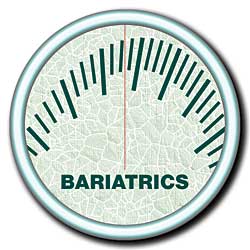
Bariatrics
We identified bariatrics as a key industry segment providers would want to monitor during 2008, and we believe it will continue to define the industry in many ways throughout 2009, as well.
In terms of population, while it is common for catchphrases such as “the obesity epidemic” to get tossed around in the news media, specific numbers are less easy to come by, especially when it comes to morbidly obese Americans (those weighing 300 pounds or more, with a body mass index of 40 or more). We do know that the Centers for Disease Control (CDC) says obesity rates for adults age 20 and older with a BMI of 30 or more are at an alarmingly high 34 percent.
There’s no escaping the fact that this is an expanding patient population that needs a variety of DME. From a product standpoint, bariatrics defines so many categories because bariatric patients have so many needs. They require special beds, special mattresses and support surfaces, to begin with. They have bath safety requirements that are both shared and unique from other patient groups, and they also have home access requirements that are unique, as well. In terms of mobility, they have unique walking aid, wheelchair and scooter requirements.
All these products must stand up to the weight tolerances required by bariatric patients. This is not only to ensure durability, but also to preserve patient safety and the safety of their caregivers, who can be injured caring for extremely overweight patients. This means the providers should be aware of the durability and weight capacity features of bariatric DME.
Additionally, bariatric patients typically experience a number of comorbidities such as diabetes, urinary stress and incontinence, sleep apnea and asthma, just to name a few. These comorbidities, of course, represent additional possible HME needs for the patient.
National obesity rates for U.S. adults have steadily grown from 1985 to 2007, the CDC reports. With that increasing patient population, HME providers should look to see how they can serve bariatric patient needs during 2009.

Home and auto access
We identified home access and “lighter” auto access as key growth opportunities for providers over 2008, and we still believe this opportunity will continue to grow over 2009.
Home access, in particular, serves a wide range of patient needs. Simply looking at the increasing population of older Americans, providers have an opportunity to help them live more easily in their homes via HME offerings that range from the simple to the complex. At the simple end of the scale are items such as lift chairs and similar items that help them go from a sitting to a standing position. At the more complex end of the spectrum are items such as lift chairs for safely negotiating flights of stairs that would otherwise represent a fall risk. (And both items represent excellent cash sales opportunities, as well.)
But serving older patients is part of the access market. There is a wide range of mobility patients that also require home access offerings, and savvy HME providers can specialize in serving these needs. The HME offerings in this instance also range from the simple to the complex. Threshold ramps and similar items don’t require a heavy degree of specialization, while actual home customization, such as widening doorways, does. Also, if a provider is not in a position to specialize in custom home access modifications, that doesn’t necessarily mean the provider is entirely out of the game. Identifying reputable resources that provide custom home access for patients establishes the provider as an expert resource and could possibly create beneficial referral relationships.
A similar dynamic can be found in auto access. While custom auto access and installation of complex devices such as articulating chairs require specialization and resources, providers can still find entry points by providing simple ramps and similar items. Likewise, they can strive to build referral relationships with auto access specialists.
In any case, as baby boomers and other patient groups continue striving to live their lives to their fullest, they will want to ensure their ability to enjoy not only their homes, but their ability to get out on the open road. This is a trend that will expand over 2009 and years to come.
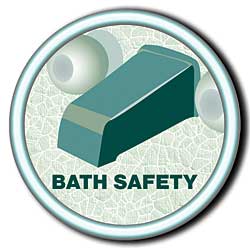
Bath safety
An component of the home access opportunities providers will see during 2009, bath safety is a niche some providers might want to consider serving in specific. There are various patient groups that have their own unique bath safety needs.
Aging patients represent an easy entry point into bath safety for providers because their bath safety needs do not require major bathroom modifications or highly specialized HME products. Grab rails, shower chairs and similar simple products satisfy the stability and fall-protection needs of older customers, and are an easy cash sale.
Bariatric patients require more robust solutions such as offerings that reinforce toilets, or studier shower chairs and commode chairs. This represents a special needs segment that providers that are already serving other bariatric needs might want to fill.
Mobility patients are yet another bath safety segment that have highly specialized needs. Simple offerings might include commode chairs, but that only scratches the surface. Mobility patients often require bathroom customization, which could be an area of expertise for a provider, or a possibility to establish a referral relationship. However, there are products on the market that obviate the need to completely customize showers and tubs by providing ways for mobility patients to use standard showers and tubs.
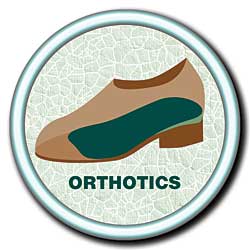
Orthotics
As the baby boom ages but continues to remain active, its need to correct orthopedic conditions and injuries is expanding. In fact, market researcher firm Global Industry Analysts says it expects the orthopedic orthotics market to reach $5.1 billion by the year 2015. The firm chalks this up to several factors, including an aging populace increasingly suffering from osteoarthritis and obesity-related joint wear, and increases in arthritis and other bone ailments.
Not surprisingly, foot orthotics in particular represents an entry point into this expanding market for providers, but the field is not a slam-dunk. Orthotics requires specialized knowledge.
Fortunately organizations such as The VGM Group and the MED Group offer special programs to help enter this market segment. Providers interested in diversifying into orthotics over 2009 should investigate the Orthotic & Prosthetic Group of America and The National Orthotics Network to gain special knowledge and learn more about the professional ethics of this growing field.
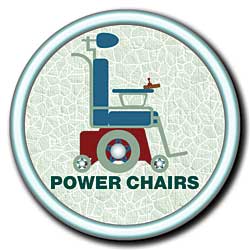
Power chairs
Last year, we identified power chairs as an important HME industry segment for providers to watch during 2008 because of the regulatory changes they were facing. New testing requirements and the complex rehab carve out from competitive bidding were at the fore of mobility providers’ minds.
This year, mobility providers still have to keep regulatory challenges in mind, but at least they have a little more direction. Unfortunately, it’s not necessarily the direction they’d prefer. Congress did approve the complex rehab carve out, thus protecting highly specialized patient needs from the specter of competitive bidding. Unfortunately, that category was also part of the 9.5 percent cuts. Given the expense of complex rehab mobility products, this is naturally a major concern for providers and patients alike.
Lobbying efforts have put pressure on Congress to reverse this calamitous decision by introducing legislation to protect complex rehab. (And additional efforts are being made to protect power chairs as a whole, as well.
But regulatory issues aren’t the only element of the power chair segment providers should monitor. Dramatic advances are being made in the realm of power chairs that are increasing their usability, safety, mobility, reliability and functionality.
In particular, advances in power chair drives are making it easier for patients to more safely maneuver across broken and uneven terrain obstacles, thus expanding their range of mobility and access. And in terms of usability, power chairs are becoming increasingly adaptable to patients’ lifestyles. Features such as enhanced displays that let users not only monitor their battery power, but share family photos recognize those lifestyle needs. Additional advances include the increased ability to remotely run diagnostics on power chairs and in some cases upgrade their software.
The goal for mobility providers in 2009 will be to protect patient access to these advances from misguided public policy.
This article originally appeared in the January 2009 issue of HME Business.